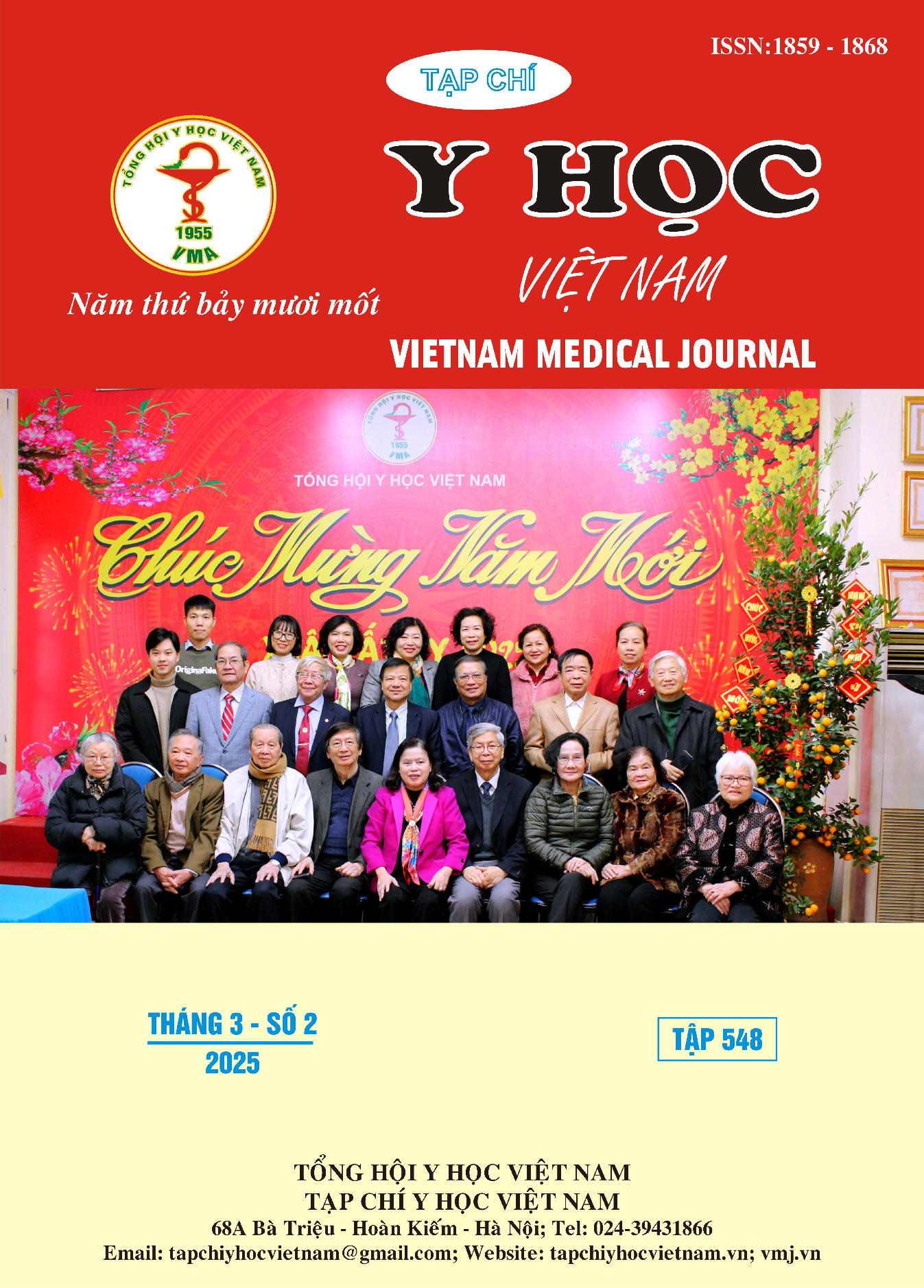CLINICAL, PARACLINICAL, AND GENOTYPIC FEATURES IN PATIENTS WITH FAMILIAL HYPERCHOLESTEROLEMIA
Main Article Content
Abstract
Background: Familial hypercholesterolemia (FH) is an autosomal dominant genetic disorder characterized by elevated low-density lipoprotein cholesterol (LDL-C) levels. If undiagnosed and untreated, FH poses a significant risk, with up to a 30% chance of mortality or cardiovascular events in men before the age of 50 and 50% in women before the age of 60. Myocardial infarction in individuals under 45 years old is often linked to FH. Identifying the specific genetic mutations in individuals with a confirmed or probable diagnosis of FH provides critical insights for patient management and prognostic evaluation for other family members. Objective: (1) To determine the mutation rate and genotypic distribution in individuals diagnosed with possible or definite familial hypercholesterolemia (FH) based on the Dutch Lipid Clinic Network (DLCN) criteria. (2) To compare specific characteristics between individuals with and without genetic mutations diagnosed with possible or definite familial hypercholesterolemia (FH) according to the Dutch Lipid Clinic Network (DLCN) criteria. Method: A cross-sectional study was conducted on individuals diagnosed with possible or definite familial hypercholesterolemia (FH), defined as a Dutch Lipid Clinic Network (DLCN) score of ≥6. The study population consisted of patients who presented at Tam Anh Hospital and Tam Duc Hospital between January 2023 and October 2023. Result: The prevalence of genetic mutations in individuals diagnosed with possible or definite familial hypercholesterolemia (FH) based on the Dutch Lipid Clinic Network (DLCN) criteria was 23.88%. Patients with pathogenic genetic mutations exhibited a higher proportion of individuals under 50 years old, a higher prevalence of corneal arcus, elevated LDL-C levels, and higher DLCN scores compared to the mutation-negative group. No significant differences were observed between the two groups in terms of other factors, including sex, BMI, prevalence of hypertension, diabetes mellitus, smoking status, family history, total cholesterol, HDL-C levels, blood glucose, HbA1c. Conclusion: Genetic mutation screening should be prioritized in patients diagnosed with possible or definite familial hypercholesterolemia based on the DLCN criteria, particularly those with high-risk features such as being under 50 years of age, the presence of corneal arcus, and elevated DLCN scores.
Article Details
Keywords
Familial Hypercholesterolemia, Dutch Lipid Clinic Network, Genetic Mutations
References
2. Trương Kim Phượng, Nguyễn Bảo Toàn, Lê Huyền Ái Thúy. Tính chất đột biến gene APOB và LDLR trên bệnh tăng cholesterol máu ở người Việt Nam. Tạp chí Khoa học Đại học Mở TP Hồ Chí Minh – Kỹ thuật và Công nghệ 2021:52-63.
3. Charng MJ, Chiou KR, Chang HM, et al. Identification and characterization of novel low-density lipoprotein receptor mutations of familial hypercholesterolaemia patients in Taiwan. Eur J Clin Invest. 2006;36(12):866-74.
4. Gidding SS, Kirchner HL, Brangan A, et al. Yield of Familial Hypercholesterolemia Genetic and Phenotypic Diagnoses After Electronic Health Record and Genomic Data Screening. J Am Heart Assoc. Jul 4 2023
5. Hopkins PN, Toth PP, Ballantyne CM, et al. National Lipid Association Expert Panel on Familial H. Familial hypercholesterolemias: prevalence, genetics, diagnosis and screening recommendations from the National Lipid Association Expert Panel on Familial Hypercholesterolemia. J Clin Lipidol.2011:S9-17.
6. Mach F, Baigent C, Catapano AL, et al. 2019 ESC/EAS Guidelines for the management of dyslipidaemias: lipid modification to reduce cardiovascular risk. Eur Heart J. 2020:111-188.
7. Shakhtshneider E, Ivanoshchuk D, Timoshchenko O, et al. Analysis of Rare Variants in Genes Related to Lipid Metabolism in Patients with Familial Hypercholesterolemia in Western Siberia (Russia). J Pers Med.2021;11(11)


